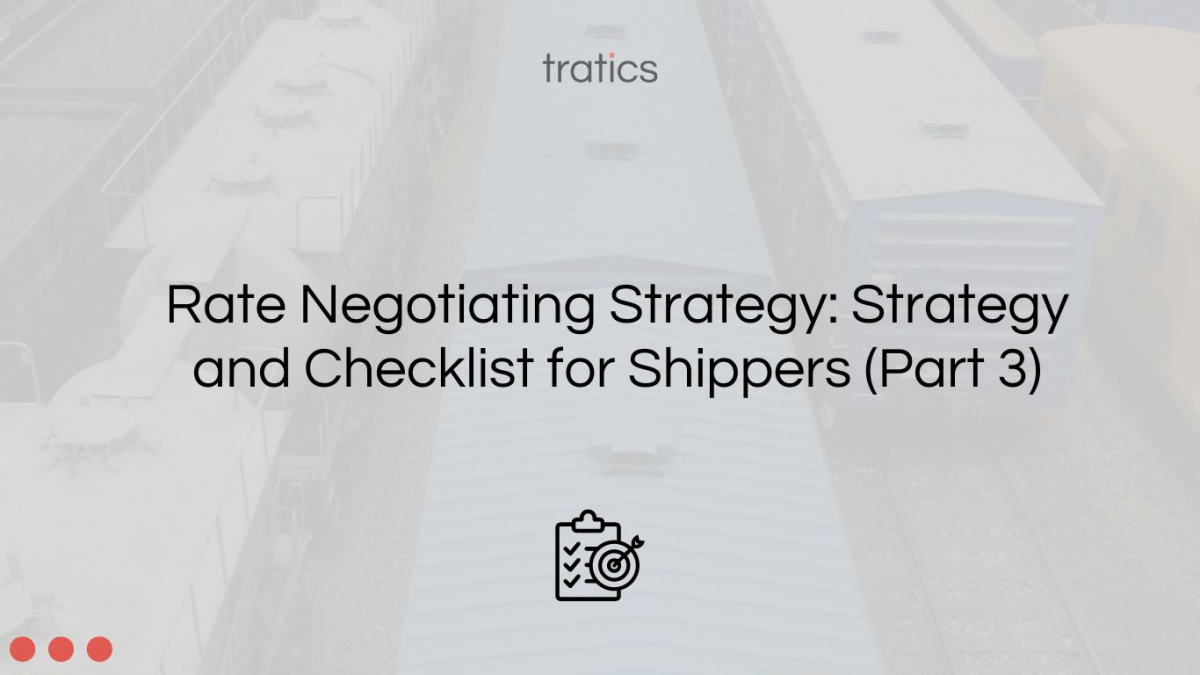By setting up the key elements of your negotiating strategy and preparing thoroughly, shippers can ensure that they are making the best possible case for lower rail rates and securing the most favorable terms for their business.
The first step in negotiating with railroads is to make the business case for lower rates. This involves presenting a compelling argument for why the railroad should support lower rates based on your unique circumstances and the value you bring to the railroad. Some of the key elements to include in your business case are your history with the railroad, your average profit/contribution to the railroad, and the profitability of your business compared to the average profitability of the railroad's book of business.
It's also important to understand how railroad pricing managers think and what drives their decision-making. This includes understanding their pricing strategy, revenue goals, and market conditions. Some key concepts to understand include differential pricing and the importance of profitability and revenue per unit (RPU) over volume.
Another part of the preparation involves building profiles of each railroad that you are working with. This includes gathering information on their carloads, revenue, profit numbers, market share for your commodities, and qualitative information such as their relationship style, service levels, rate aggressiveness, and responsiveness to rate requests or issues. Gather information on the railroad's internal perspective, including its growth goals, revenue, operating ratio, competitive environment, pricing strategy, and stock price. In addition, if you use private equipment, it's important to highlight the fact that the railroad does not need to supply equipment to you, which can be a significant cost savings.
Before starting rate negotiations, shippers should analyze their shipping profile, conduct market research, understand their relationship with each railroad, calculate the benefits of their traffic to each railroad, and develop a tailored negotiating strategy. Establishing a negotiation team with a clear division of roles and responsibilities can also help ensure a successful outcome.
Before starting rate negotiations with the railroads, it's very important to be well-prepared and equipped with the right information. We prepared a quick checklist to help shippers prepare for negotiations:
- Analyze your shipping profile:
- Review your shipping volumes, destinations, and frequency.
- Understand the types of commodities you ship and the corresponding market conditions.
- Determine the criticality of each railroad in your transportation network (major vs. minor).
- Conduct market research:
- Analyze the railroad market share information for your commodities using weekly carload volume data.
- Keep track of the railroad's stock prices, financial performance, and operating ratio.
- Understand your relationship with each railroad:
- Evaluate the railroad's relationship style, service levels, rate aggressiveness, and responsiveness to rate requests or issues.
- Keep track of historical negotiations and outcomes.
- Calculate the benefits of your traffic to each railroad:
- Determine the average profit/contribution you provide to the railroad.
- Compare the profitability of your business with the average profitability of the railroad's book of business.
- Consider the cost savings associated with using private equipment.
- Develop a negotiating strategy:
- Tailor your approach based on your understanding of each railroad's priorities and goals.
- Identify your most important negotiation points and be prepared to present them in a clear and concise manner.
- Establish a negotiation team with a clear division of roles and responsibilities.
By building a robust strategy and following its elements, such as following this example checklist, shippers can better prepare themselves for successful negotiations with railroads.


